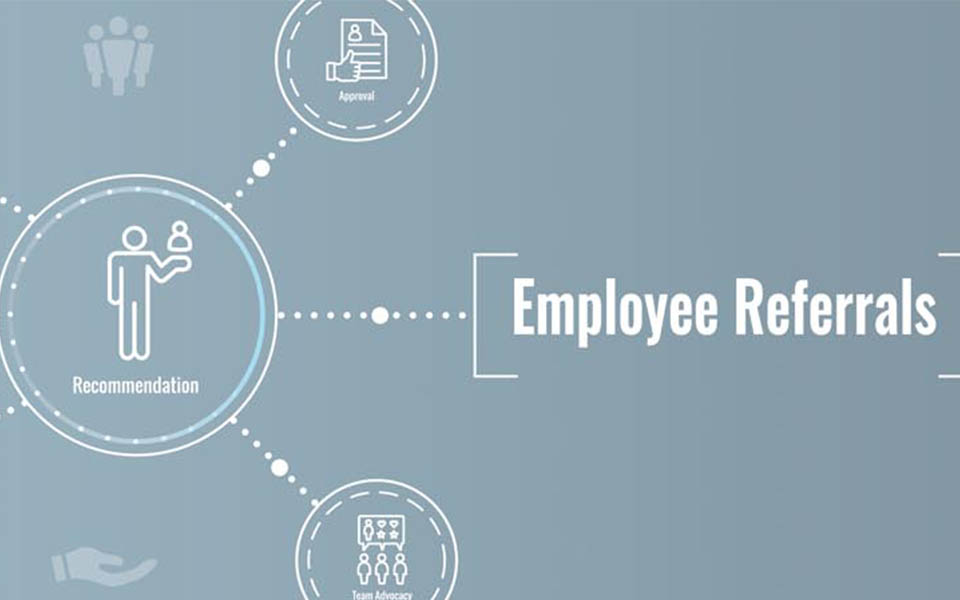Recruiting new employees can be a costly and time-consuming process. It involves searching for potential candidates, interviews and onboarding. To reduce the time and expense spent finding qualified candidates who will fit the company culture, employers are looking to current staff to help with recruitment efforts — and they’re having great success!
Benefits of an Employee Referral Program
Employee referral programs offer multiple benefits. They can help improve retention rates and create a more positive work environment, as employees feel a sense of ownership and pride in recruiting their friends and former colleagues. Referrals can also result in higher-quality hires who fit the company’s culture and mission, and studies have shown that referred candidates tend to be more engaged and productive. Additionally, referral bonuses are often substantially less than the costs associated with traditional recruiting methods.
Getting Started With Designing an Employee Referral Program
Consider the following steps to design a simple and effective referral program:
- Define Program Objectives: Clearly outline the goals of the referral program. Whether it’s to fill positions faster, improve the quality of hires or enhance company culture, having clear objectives will guide the program’s design.
- Establish Clear Referral Policies: Draft guidelines detailing who is eligible to refer candidates, which positions are included in the program and under what circumstances referrals are rewarded.
- Set Incentive Structures: Consider referral rewards, like bonuses, vacation days or gift cards. Specify timing. For monetary incentives, stagger payments: for example, one when the person is hired, the other after six months.
- Communicate with Employees: Launch the program with an informative campaign that educates staff about how the program works and the benefits of participating. Ongoing communication is vital to keep employees engaged.
- Leverage HRIS Systems: Integrate the referral program with Human Resources Information Systems (HRIS.) Get started by outlining the questions that need to be answered to evaluate the candidate’s fit, skills and other relevant criteria for moving on to the interview process, and ensure that the system is user-friendly and accessible to all employees.
- Monitor and Adapt: Regularly review the referral program’s performance using HRIS analytics. Be prepared to make adjustments to improve effectiveness and reach your program’s objectives.
Implementing these steps will create a solid foundation for an employee referral program that supports business objectives, enhances recruitment efforts and engages the workforce.
HRIS Technology Assistance
HRIS can assist in creating and managing an employee referral program. HRIS allows managers and employees to manage and track referrals, bonuses and other referral program metrics. Additionally, these systems can provide analytics and reporting to help you understand the effectiveness of an employee referral program, enabling data-driven decisions on how to improve the program.
A strong employee referral program, supported by HRIS technology, is a valuable asset for any organization. By simplifying processes, providing detailed tracking and analytics, and improving communication, HRIS plays a critical role in the success of referral programs. When implemented effectively, these programs can help attract the best talent, promote a positive company culture, boost employee engagement and, ultimately, contribute to the organization’s competitive advantage.
Interested in implementing an employee referral program? See how CBIZ can help!
© Copyright CBIZ, Inc. All rights reserved. Use of the material contained herein without the express written consent of the firms is prohibited by law. This publication is distributed with the understanding that CBIZ is not rendering legal, accounting or other professional advice. The reader is advised to contact a tax professional prior to taking any action based upon this information. CBIZ assumes no liability whatsoever in connection with the use of this information and assumes no obligation to inform the reader of any changes in tax laws or other factors that could affect the information contained herein. Material contained in this publication is informational and promotional in nature and not intended to be specific financial, tax or consulting advice. Readers are advised to seek professional consultation regarding circumstances affecting their organization.
“CBIZ” is the brand name under which CBIZ CPAs P.C. and CBIZ, Inc. and its subsidiaries, including CBIZ Advisors, LLC, provide professional services. CBIZ CPAs P.C. and CBIZ, Inc. (and its subsidiaries) practice as an alternative practice structure in accordance with the AICPA Code of Professional Conduct and applicable law, regulations, and professional standards. CBIZ CPAs P.C. is a licensed independent CPA firm that provides attest services to its clients. CBIZ, Inc. and its subsidiary entities provide tax, advisory, and consulting services to their clients. CBIZ, Inc. and its subsidiary entities are not licensed CPA firms and, therefore, cannot provide attest services.















